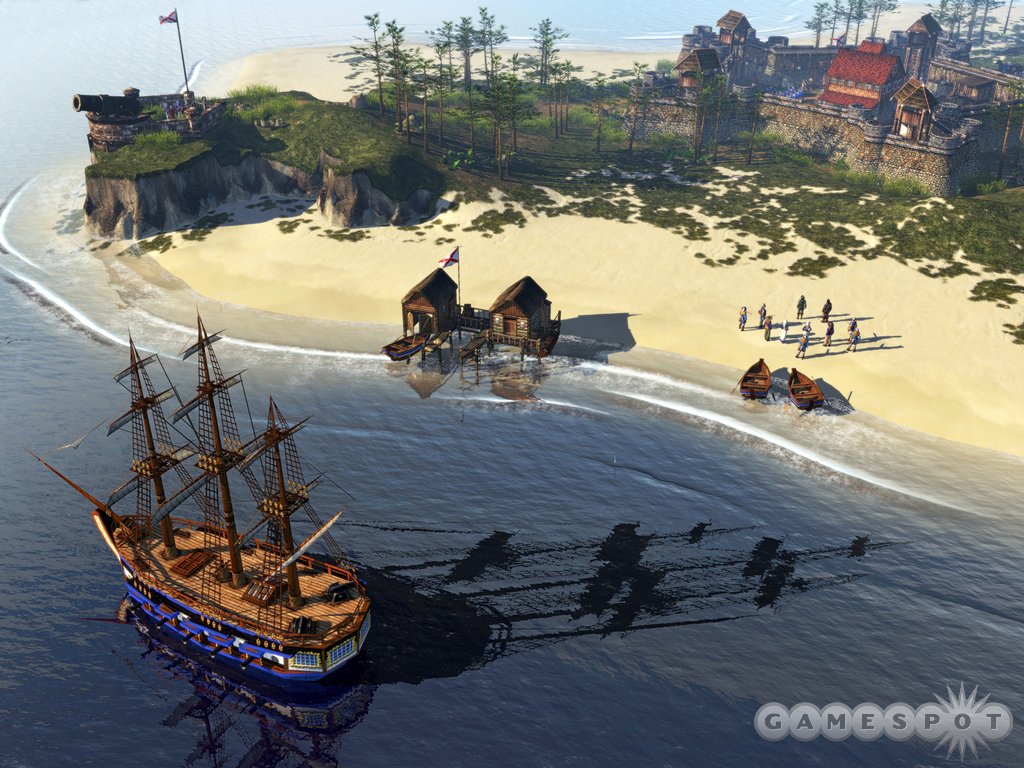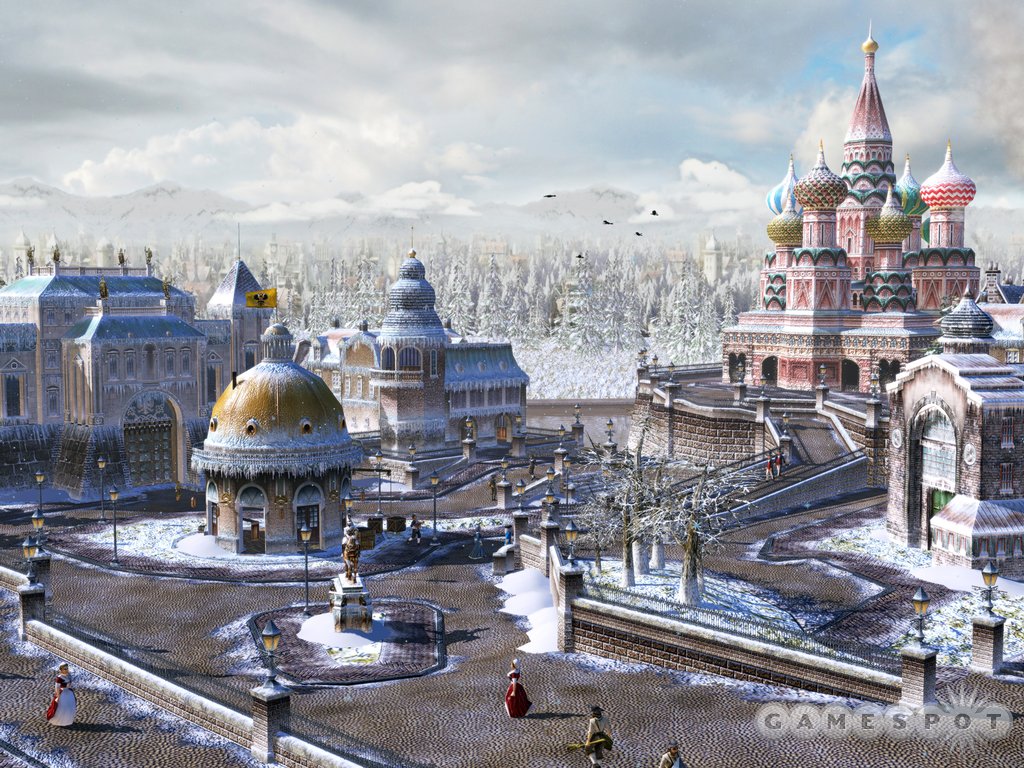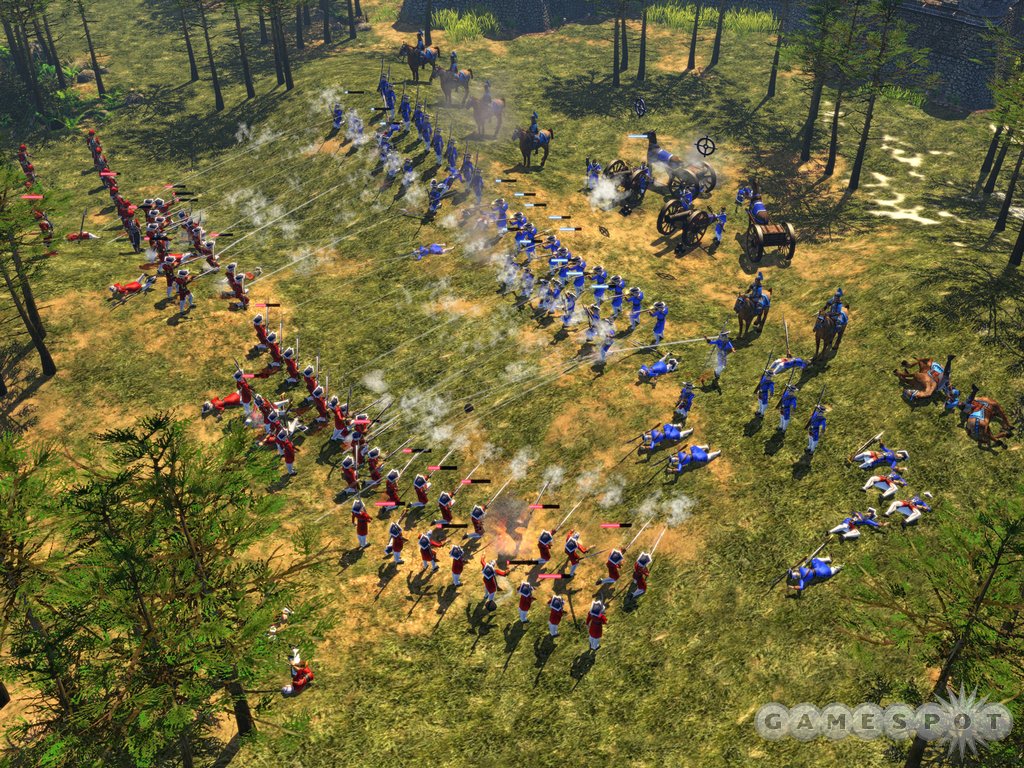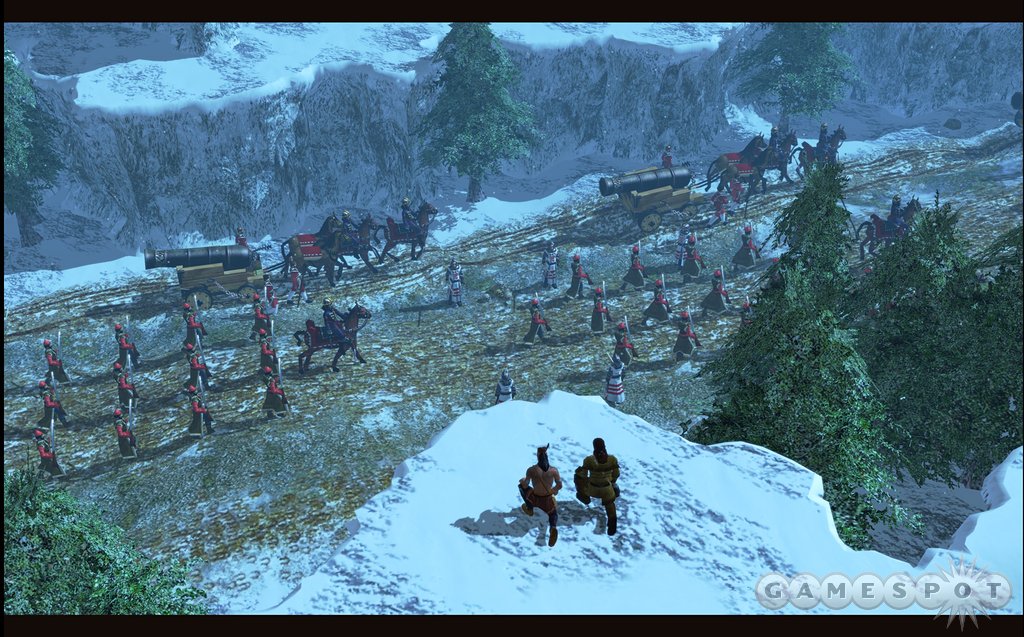Age of Empires III Hands-On - Exploring a Whole New Age
We get our mitts on this highly anticipated real-time strategy game and learn about the many new features, including the home city and hero units.
After almost six years since the last chapter in the series, Microsoft and Ensemble will revisit their blockbuster real-time strategy franchise, Age of Empires, later this year. Needless to say, a lot has changed since Age of Empires II, not just in terms of technology, but also in gameplay. There are no doubts that Age of Empires III looks fantastic, thanks to its new, cutting-edge graphics engine, but the big question is: Has the gameplay evolved as well? Thankfully, we've gotten our hands on a preview of the game, and we've been testing it out to see how Age of Empires III is shaping up. What we can report thus far is that Age of Empires III blends the familiar gameplay that the franchise is known for with a ton of new and interesting concepts that ratchet up the strategy to whole new levels.

As you probably already know, Age of Empires III shifts the series' focus to the colonial era, when European powers carved out their stakes in the New World. As such, you can play as the Spanish, English, French, Portuguese, Dutch, Prussians, Russians, and even the Ottomans, in the race to conquer the Americas by establishing colonies, monopolizing trade, and crushing the opposition by warfare. (Native American tribes, such as the Cherokee and the Aztecs, can be enlisted as allies during a game, and you can raise Native American armies, but they aren't really a playable faction like the European ones.) The game features five "ages" of history, and they are, in order: discovery, colonial, fortress, industrial, and imperial. This covers a good 200-300 years of world history, and at the beginning of the discovery age, you'll still see remnants of the medieval ages that have yet to die, such as crossbows and pikemen. On the other end of the spectrum, "iron horses" (trains) begin to make their appearance by the imperial age.
We've been playing through the skirmish mode quite a bit, mainly due to the fact that the other modes aren't fully included in the version we played with. Like the first two games in the series, Age of Empires III will also feature a single-player campaign, as well as multiplayer modes. However, the skirmish mode (in terms of both single-player and multiplayer) is the most popular mode for Age of Empires fans.
The major new feature in Age of Empires III hits you when you start the game, because it dominates the main menu screen. It's the home city, and you'll create a home city of your own when you create your profile. In a way, the home city represents you, and it will grow and evolve the more you play Age of Empires III, because you can gain experience points to "level up" your city and customize it in different ways. It's certainly a beautiful sight, as you'll see a richly detailed European city, bustling with activity. How the home city works is a bit complex, but it plays a huge role in Age of Empires III, and it actually required us to go through the in-game tutorial to figure out how to use it. But once we did, we found it invaluable.
Basically, the home city is the capital of your European empire, and from there you essentially "launch" colonization missions to the New World. However, the home city is much more than that. When you begin a game, you'll find yourself in the familiar position of starting with a handful of settlers and a town center. From there, you have to start gathering resources (wood, food, and gold), begin to explore the map, and construct the many new buildings that you'll need to expand your colony. As you do these things, you'll gain experience points, which accumulate in a circular meter at the bottom of the screen. The more "heroic" the act that you perform, such as having your hero unit defeat a treasure guardian and claim the treasure, the more experience you're awarded. (Oh, yeah, more on the hero a bit later.) When you get enough experience to gain a level, you can click on the meter and it switches you back to the home city. From there, you can select a reward that the home city sends to you for doing such a great job in the New World. These rewards can range from supplies to more settlers, technology, or military units. Then just click on the circular meter again, and you'll switch back to your colony; a little bit later, your reward will arrive on screen, straight from the home city.

Yes, it seems a bit complicated at first, but in no time we figured out the home city feature and were using it in different ways. Early on, it's invaluable to use the home city to send extra resources or settlers that can get your economy going, quickly. But by the middle and late stages of a game, we stockpiled our home city points for when we needed them. So, if we got into a struggle with a rival European power's colony, we simply ordered up a slew of musketeers and hussars (cavalry) to reinforce our forces in a hurry. You can even requisition outposts (which serve like the towers in Age of Empires II), as well as a fort that can be built anywhere you want.
Conquest of the New World
The home city aside, much of the underlying real-time strategy in Age of Empires III is familiar, but different at the same time. Settlers still gather resources, but they no longer need to shuffle them back and forth to a drop-off point. As long as the settlers are actually working, the resources will accumulate in your stockpile. You still start out with a scout, though in this case it's a hero unit, and you can send him around the map to uncover the fog of war. (Alas, there still is no "autoexplore" function in Age of Empires III, though you can program waypoints by holding down the shift key while clicking on the minimap.) 
The hero is not only tougher and more capable than regular units, but he is the only one who can recover the treasure that is randomly scattered around the map. This treasure can come in the form of extra resources, experience points, or even an item that you can equip a hero with to make him even more powerful. Keep in mind that each treasure node is guarded by a wild animal (ranging from wolves and bears to wildcats) or bandits, so it's useful to attach some musketeers or other military units to assist the hero in defeating them. Moreover, your hero cannot die. If he is taken down in the wilderness, he'll simply heal back up eventually. And if he is captured, you can ransom him back or try to free him by force.
Meanwhile, the old trade route system from previous Age of Empires games has been overhauled considerably in Age of Empires III. Now you can build trading posts at various points on the map. These posts, which must be defended if you want to keep them, help generate both trade and, more importantly, experience points. And if you build a trading post near a Native American tribe, you can enlist them to your side, which means that you can produce Native American units, as well as research various upgrades for them.
One of your main goals will be to advance ages as quickly as possible, as you can only get access to advanced military units and other technologies in later ages. As with the earlier Age games, you must stockpile enough resources in order to advance. But a big new difference is that when you advance to a new age, you get to select what kind of politician you wish to lead you. This can affect the types of bonuses you get. For example, in the fortress age you may choose between the governor, the admiral, or the Mohawk (assuming you've made friends with a nearby Native American tribe). Choose the governor, and you get extra settlers and musketeers; the Mohawk gives you native warriors, and the admiral gives you another ship and extra wood.
And now we get to the good part: combat. Another of your main goals is to build up a strong enough defensive force to keep interlopers away, and then to be able to switch to the offensive when you need to. This means building a well balanced force, usually of infantry, cavalry, artillery, and (if you have a coastal map) ships. You can construct barracks, stables, and foundries to churn out your units, and there are various upgrades available for purchase, assuming you've reached the appropriate historical age and can afford them. Defensively, you can build forts, outposts, and walls, and upgrade those as well.
Units automatically march in formation, as they did in earlier Age games, though we didn't get to see the new battle formation system (it may not be in this version of the game). We managed to roll over the artificial intelligence (though we must admit that we haven't risked the "hardest" difficulty setting yet), and our success translated into our home city leveling up in experience. And, though it didn't seem to be working in this build, you can use these experience points to customize your city--not only in appearance, but in the types of reinforcements it sends you.

If you've seen the early screenshots and movies, then you know that Age of Emprise III looks spectacular. And yes, the game looks as good as the screens, especially if you have a high-end video card capable of high dynamic range lighting, which creates light that looks more natural, and gives everything a soft glow. Of course, only the latest video cards are capable of supporting HDR lighting, so we also tried out Age of Empires III on an older, Radeon 9800XT. The game still looks great, though the soft lighting effects were missing. Even more impressive than the graphics, though, are the physics, which are used mainly for eye candy purposes, so far that we've seen. For example, order your artillery to fire on enemy towns, and you'll see buildings get ripped apart in unique ways. Just watching the arms of a windmill get blown off one by one is a treat, and blowing up stuff rarely looked as good as it does in this game.
We've only had a chance to scratch the surface of Age of Empires III, as this is a huge game to explore. There was little doubt beforehand that this was going to be one of the biggest PC games of the year, and after spending time with it, those doubts have all but evaporated. The production values are top notch, the gameplay is there, and the graphics are excellent. After six years on hold, the Age of Empires franchise looks like it's going to come back with a vengeance. Age of Empires III is scheduled to ship this fall.
Got a news tip or want to contact us directly? Email news@gamespot.com
Join the conversation